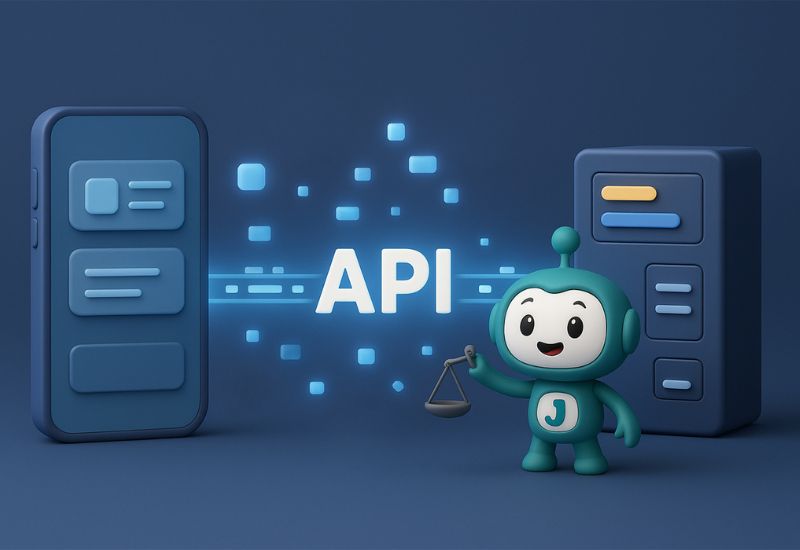
What Is API | Application Programming Interface | Jpress
Have you ever wondered how apps like Google Maps, Facebook, or your weather app work behind the scenes? The answer often involves something called an API.
APIs, or Application Programming Interfaces, are a vital part of modern technology. In this post, we’ll break down what an API is, how APIs works, and why it’s so important
Read More Articles:
- Static vs Dynamic Website: Which One Should You Choose?
- What are Micro-Interactions and Why It Matters in UX Design
- Why Product Filtering Matters for E-commerce Success
What Is API?
Think of an API like a messenger that helps two different software applications talk to each other. Imagine you’re at a restaurant. You (the user) place an order with a waiter (the API), who takes it to the kitchen (the server). Then, the waiter brings your food back to you.
In the digital world, an API does something very similar. It takes a request from one app, communicates it to another, and brings back the response.
Why Are APIs So Important?
APIs make everything smoother and faster for both users and developers. Here’s why they matter:
- Save Time and Effort
Developers don’t have to reinvent the wheel. Want to show weather data? Use a weather API. Want to accept payments? Use a payment API like Stripe. - Encourage Innovation
Many tech companies allow others to build on their platforms using APIs. For example, websites and apps often let you “Log in with Google” using Google’s login API. - Connect the Digital World
APIs allow software services to work together. Whether it’s synchronizing calendars with email or automating business tools.
How Do APIs Work?
APIs follow a simple request and response model:
- A user takes an action in an app (like clicking a button).
- That app sends a request to an API.
- The API delivers the request to a server or database.
- The server sends back the response through the API.
- The app shows the result to the user.
Example: You tap “Get Weather” in your app → the app sends a request to the weather API → the server provides the forecast → the API returns the data → you see it on your screen.
Types of APIs
Here are the most common types of APIs you’ll hear about:
- REST APIs
The most popular type. They use simple web rules (HTTP) like GET, POST, and DELETE. Ideal for most apps today. - SOAP APIs
Older and more structured. They use XML for messaging and are still used in large businesses and financial systems. - GraphQL APIs
Let apps ask for exactly the data they need. This can make apps faster and reduce wasted data. - WebSocket & gRPC
Great for real-time apps like online games or chat systems. They allow two-way communication.
Final Thoughts
APIs may seem technical, but they’re the connective tissue of the digital world. From logging in to apps, to checking your bank balance, APIs are working quietly behind the scenes to make your digital life easier.
Whether you’re a technology beginner or a business owner, understanding APIs can give you insight into how modern apps work and why they’re critical in youer application.
Looking to elevate your online presence?
Jpress offers comprehensive services to help your business thrive in the digital world. From cutting-edge website design and development to ongoing website maintenance, we ensure your site is always in top shape. Our expert SEO services can boost your search engine rankings, while our Facebook ads marketing strategies will drive targeted traffic to your site.
Need a standout brand identity? We provide professional logo design and graphic design to make your business memorable. Explore our full range of services and see how we can support your growth. Check out Jpress Services. For personalized support, feel free to reach out to us on WhatsApp or follow us on social media.
Learn more about our website design services | Discover our SEO solutions | Explore our marketing strategies
Let’s Make Things Happen
Drop your name, email and phone number to us. Let us contact you and provide you the best solution and advice.
Let's Make Things Happen
Drop your name, email and phone number to us. Let us contact you and provide you the best solution and advice.







